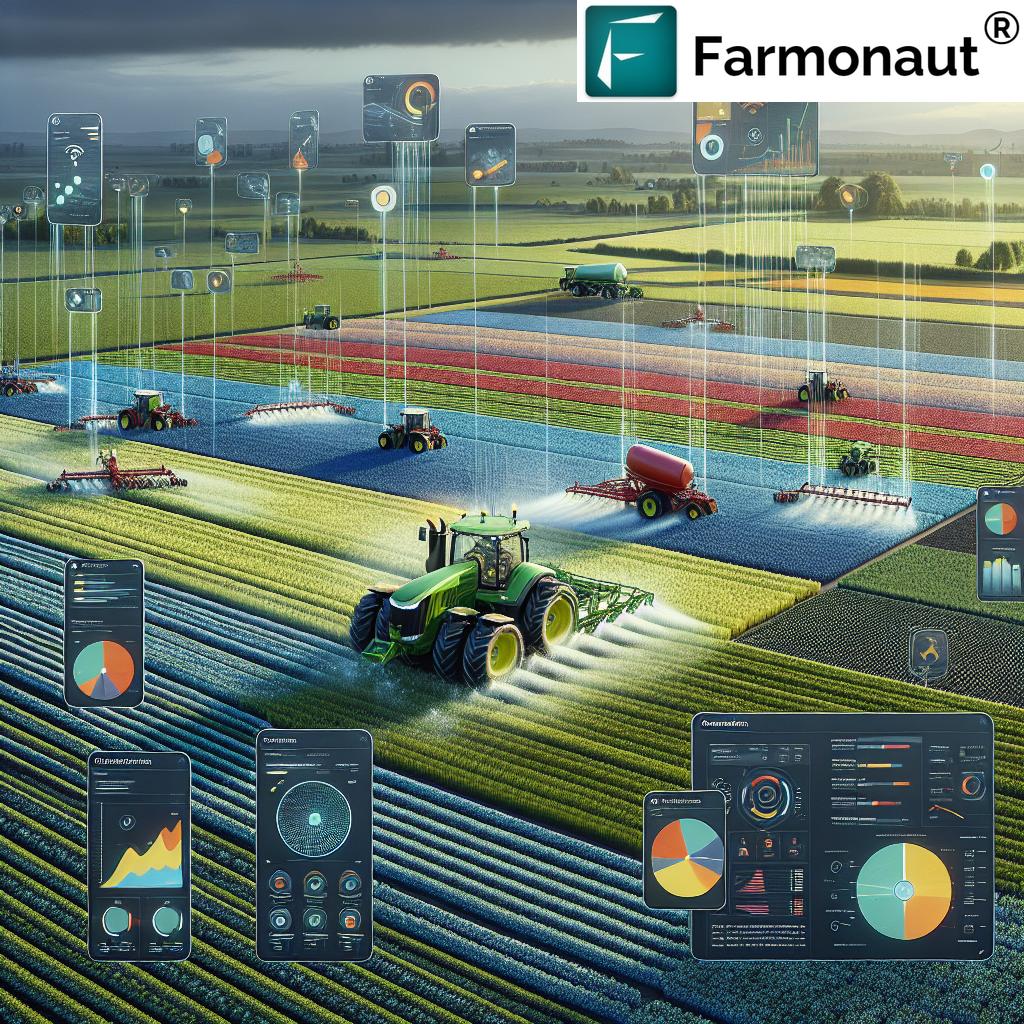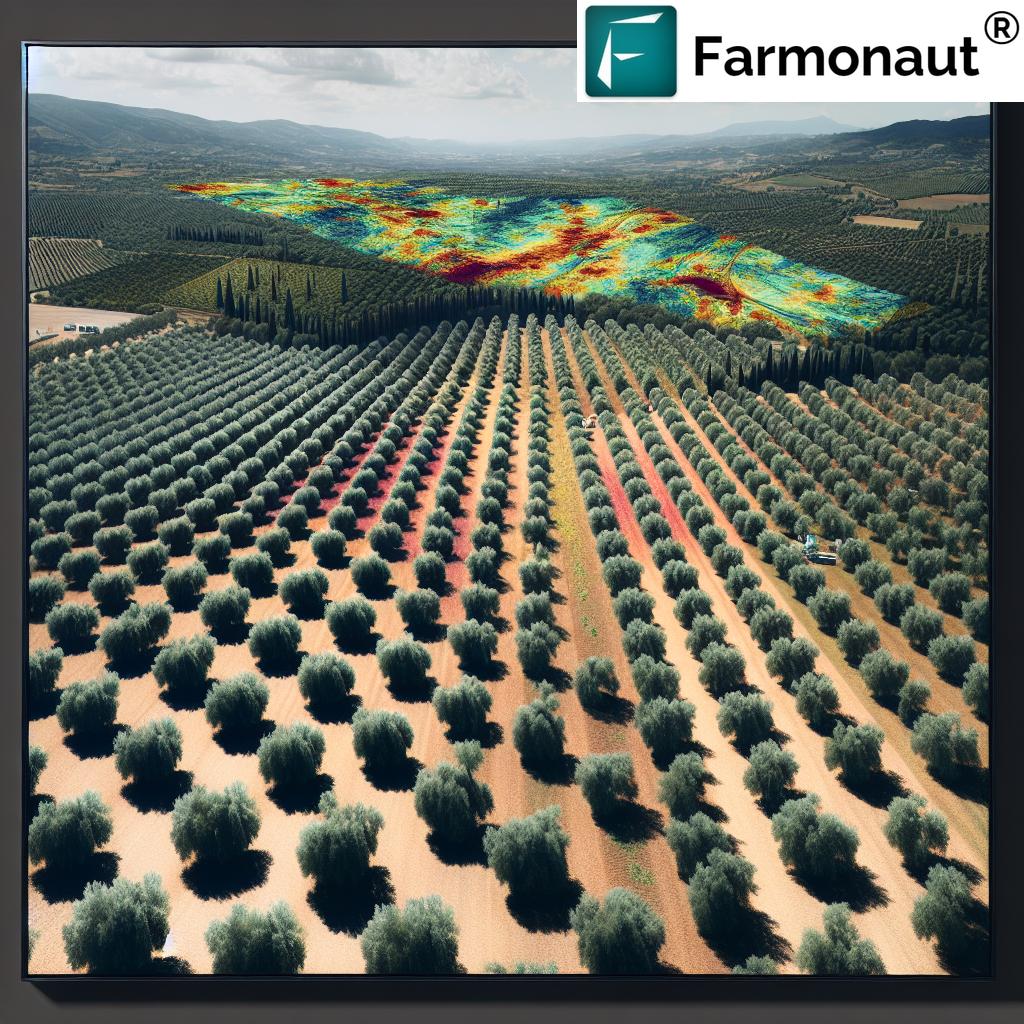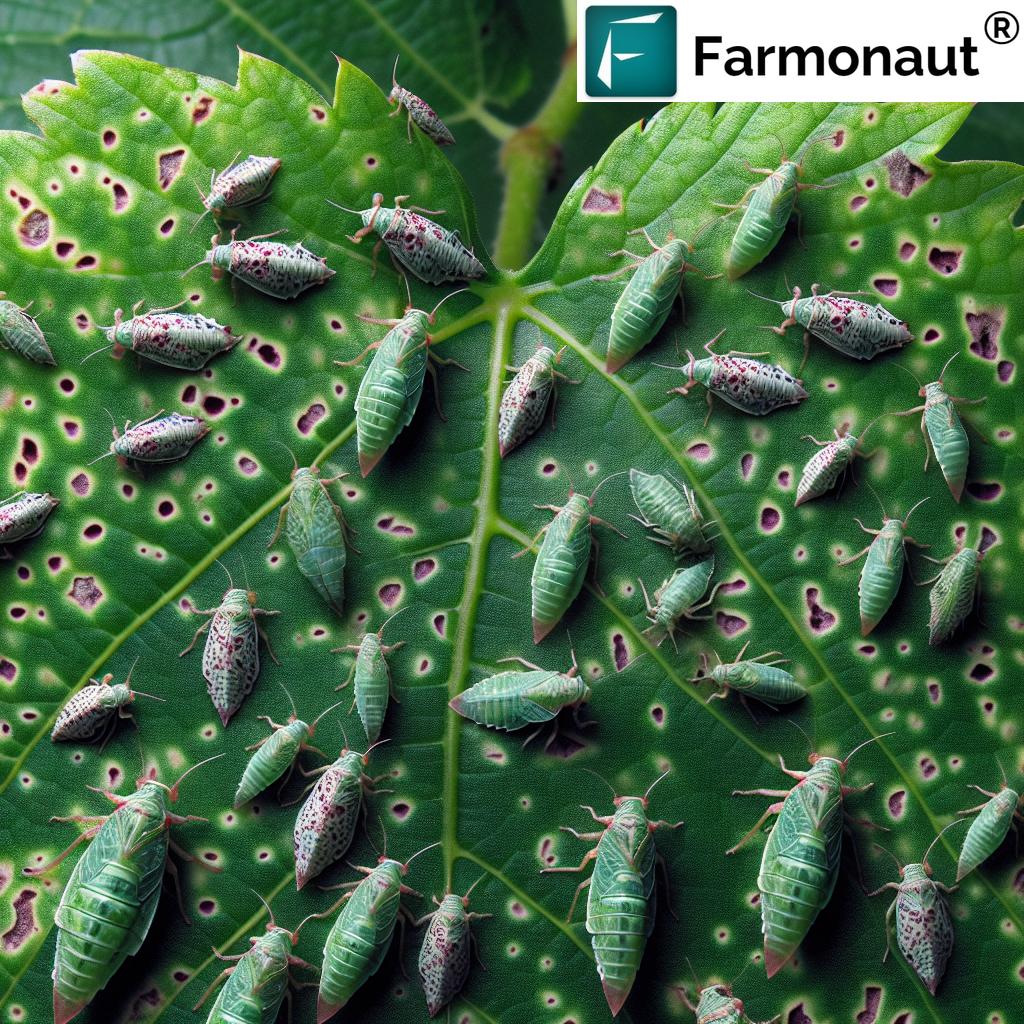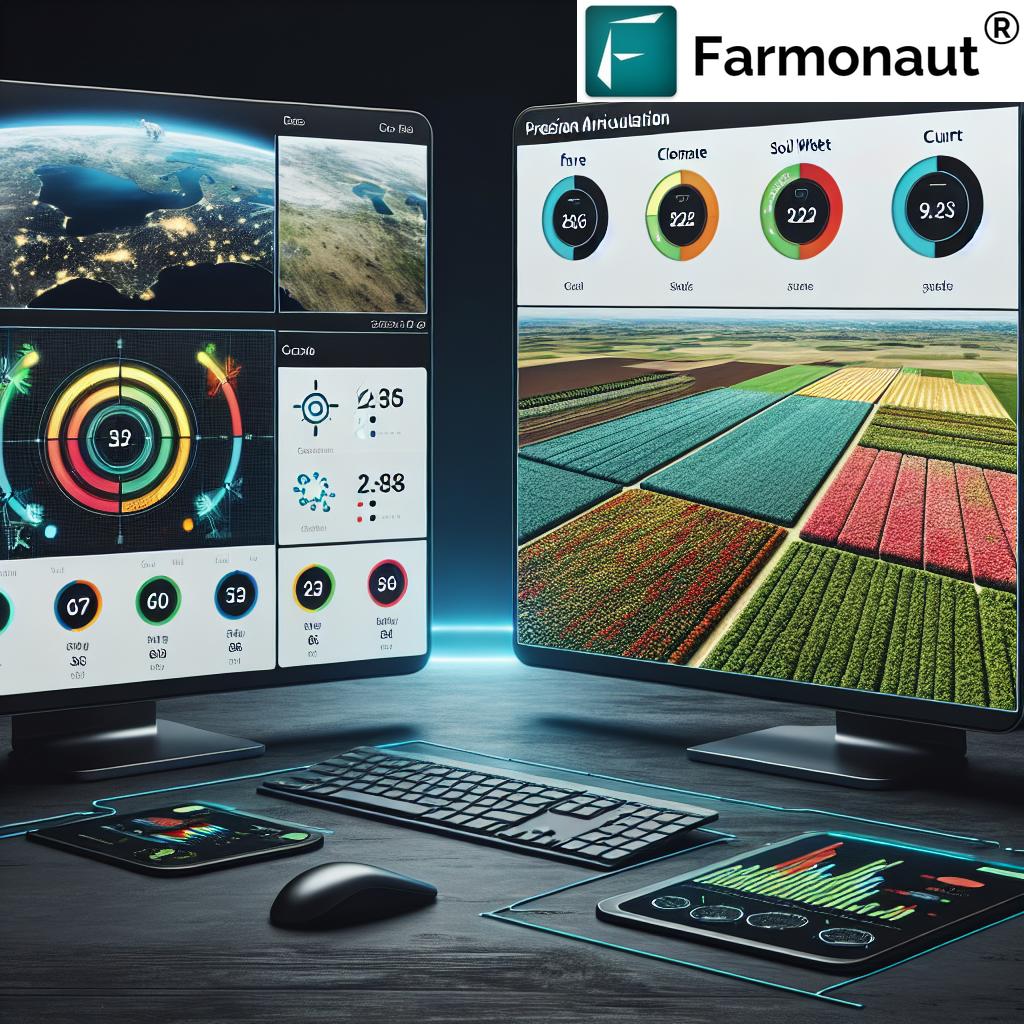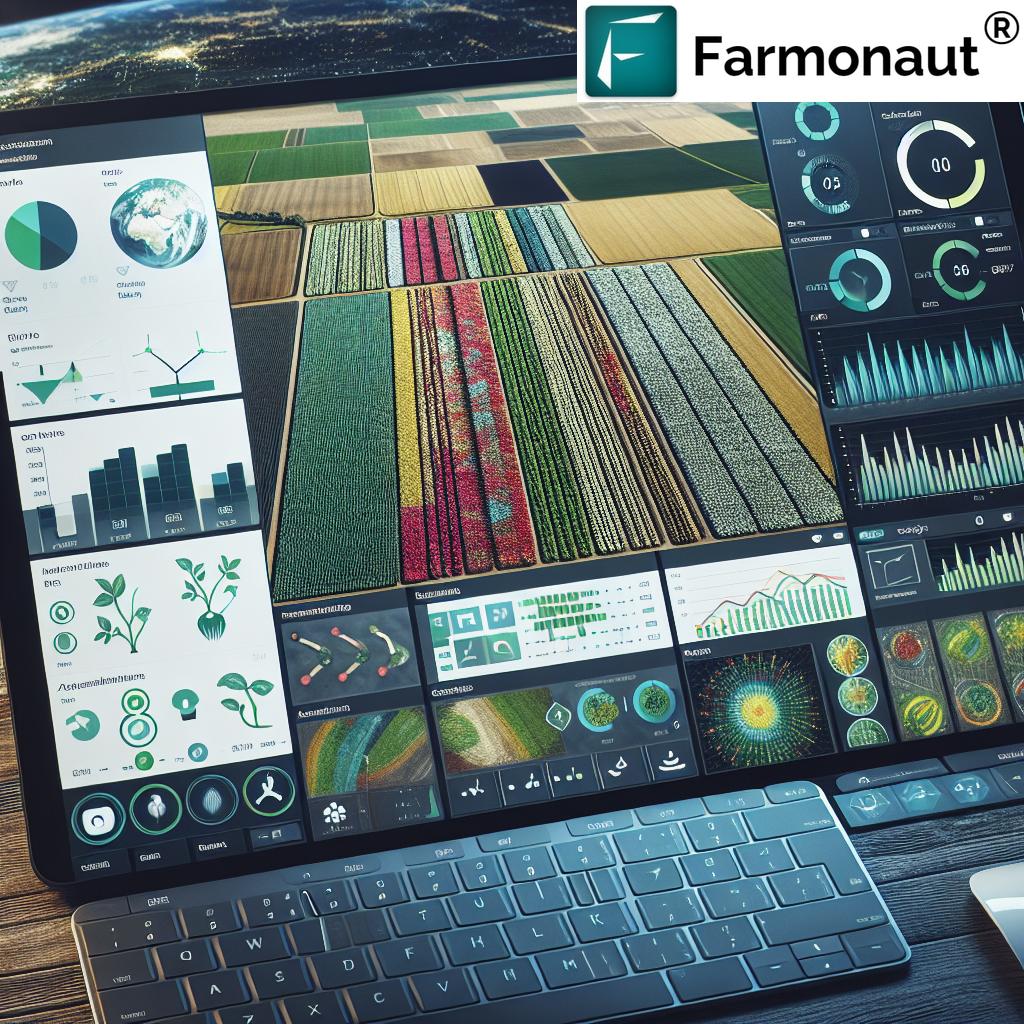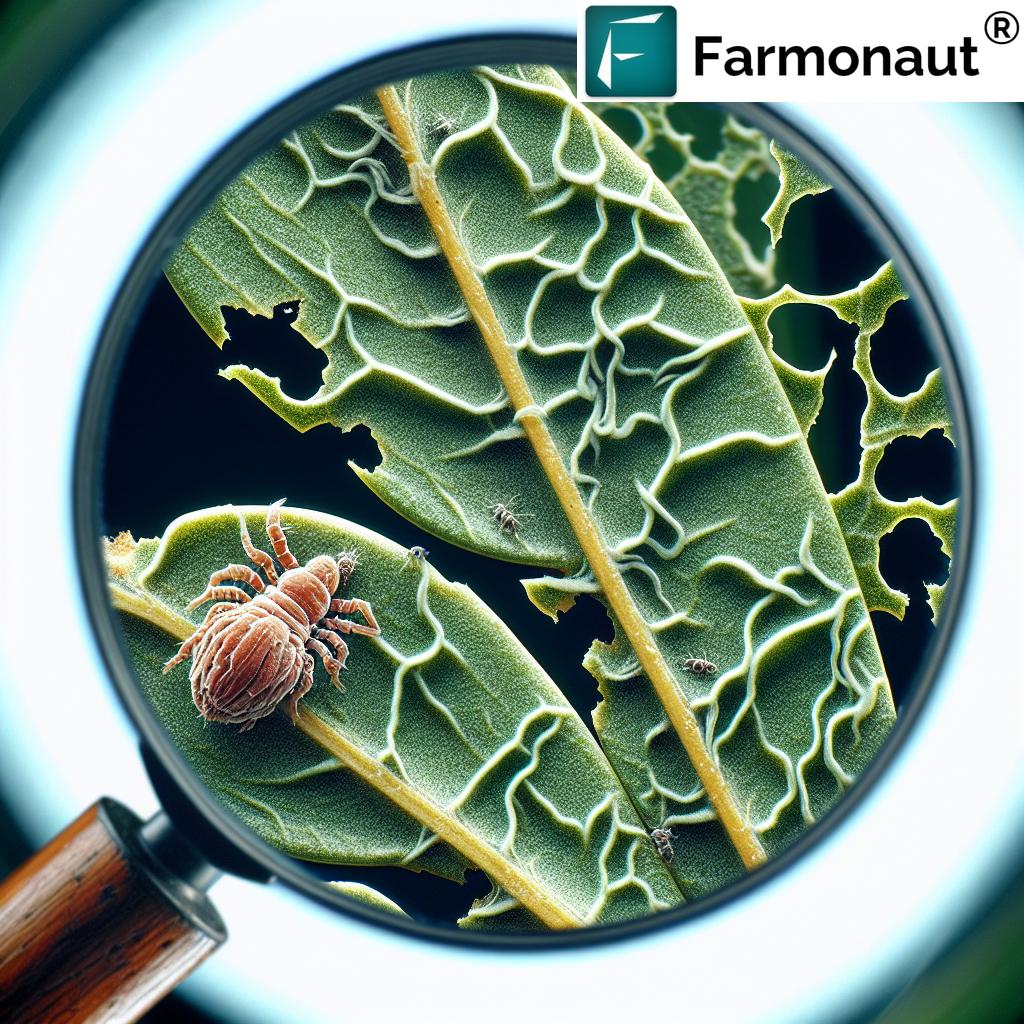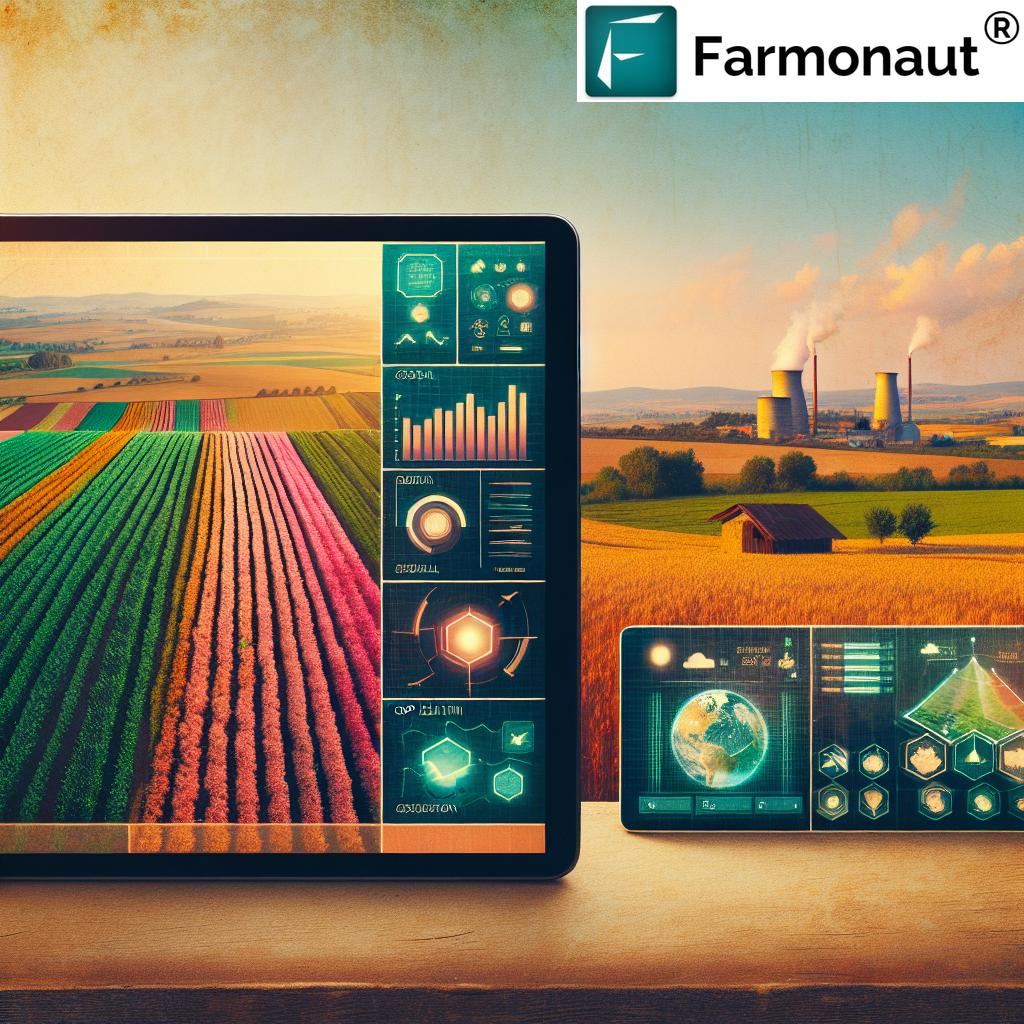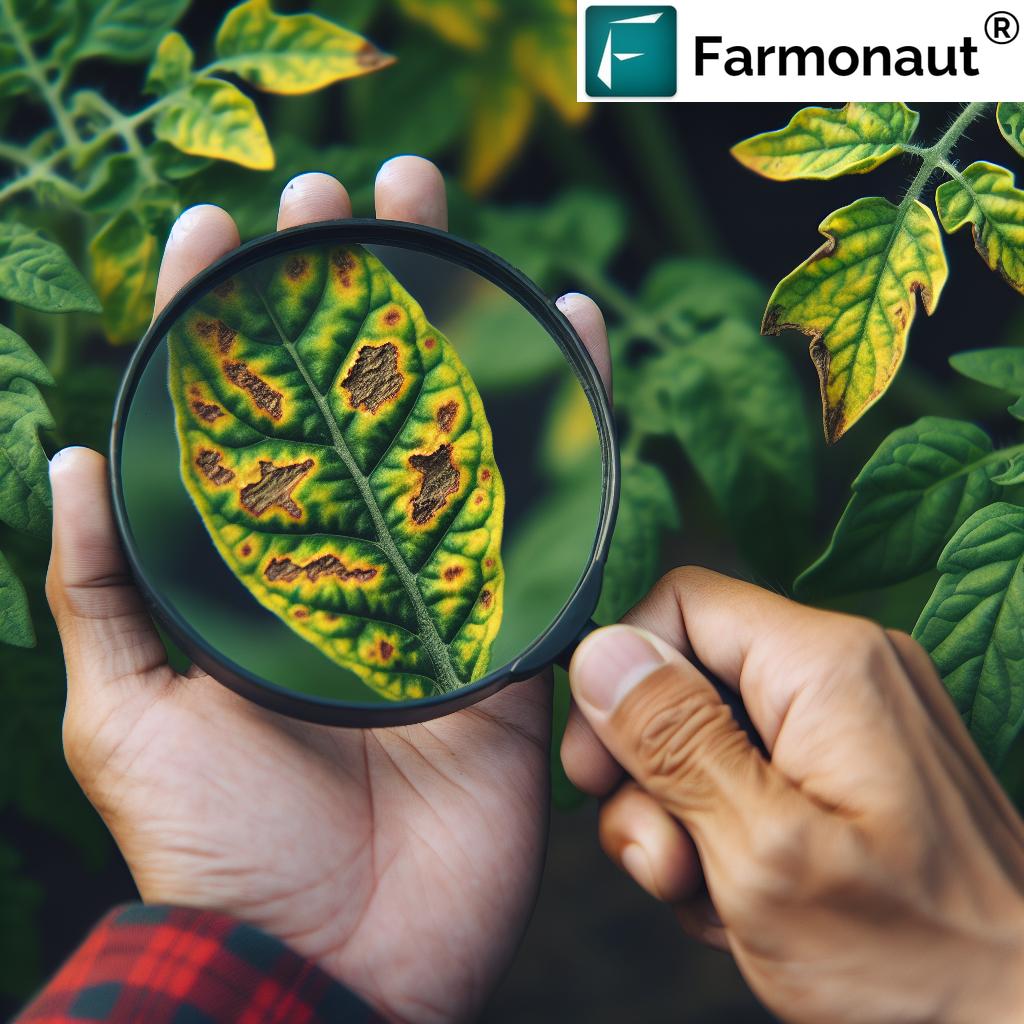Smart Farming vs Precision Agriculture: Shocking Differences
In the rapidly evolving landscape of agriculture, two technology-driven revolutions—precision agriculture and smart farming—are reshaping the future of farming worldwide. As we navigate this era of data-driven crop management, understanding the differences, overlap, and synergies between these approaches is essential for anyone pursuing higher efficiency, productivity, and sustainability in agricultural operations.
But are they really interchangeable? Or does each one hold unique potential to transform the way we monitor fields, optimize resources, boost crop health, and empower farmers from India to Africa, Europe, and beyond?
What is Precision Agriculture?
Let’s begin at the roots: precision agriculture (sometimes called precision farming) refers to a management concept where we use information technology, data collection, and advanced analytics to observe, measure, and respond to variability in our fields, crops, and soil. The primary goal is both simple and ambitious: ensure every crop, plant, and patch of soil receives exactly what it needs, when it needs it to achieve optimal health, higher productivity, and sustainability—with minimal waste.
What sets precision agriculture apart from traditional practices? It relies on real-time and historical data, gathered through technologies such as GPS, GIS, satellite and drone-based remote sensing, as well as variable rate application tools, to enable truly informed—rather than purely experience-based—decisions at every stage of the production cycle.
Core Components of Precision Agriculture
- Data Collection:
- We employ GPS mapping, GIS (Geographic Information Systems), remote sensing via drones and satellites, and in-field sensors to gather critical parameters: soil composition, moisture levels, topography, and plant health.
- Data Analysis:
- Collected data is analyzed using advanced algorithms or manual methods to identify spatial variability—differences in fertility, moisture, pest risk, or yield potential within a single field.
- Variable Rate Application (VRA):
- Inputs (fertilizers, water, pesticides) are applied at site-specific rates—not blanket coverage—ensuring crops receive only the resources needed, enhancing health and reducing environmental impact.
Key Technologies Powering Precision Agriculture
Precision agriculture draws on a diverse toolbox of modern agricultural technologies to monitor, analyze, and act with accuracy at the field and plant level.
- GPS & GIS Mapping: Essential for field-level mapping, auto-steering, boundary marking, and location-based treatment of fields.
- Drone Technology for Crop Monitoring: Offers high-resolution, on-demand imagery for pest detection, variable rate fertilization, and yield estimation.
- Satellite Imagery & Remote Sensing in Farming: Multispectral and hyperspectral environmental sensing for frequent crop, soil and moisture analytics.
- Variable Rate Technology (VRT): Hardware/software that enables precise and site-specific input application based on mapped variability.
This integration of remote environmental data—often provided by satellite-based farm management solutions like Farmonaut—is at the core of modern precision agriculture.
How Precision Agriculture Transforms Modern Farming
By leveraging real-time crop health monitoring, soil moisture analysis, and precise field mapping, precision agriculture enables us to:
- Optimize resource use (reduce fertilizer by up to 30%, save water, lower pesticide volumes)
- Enhance crop yield and quality by addressing micro-variability within fields
- Sustain land health and boost long-term profitability by reducing input waste and ensuring soil isn’t overloaded
- Respond rapidly to changing conditions—detect pest outbreaks, drought stress, or nutritional gaps for immediate, data-driven intervention
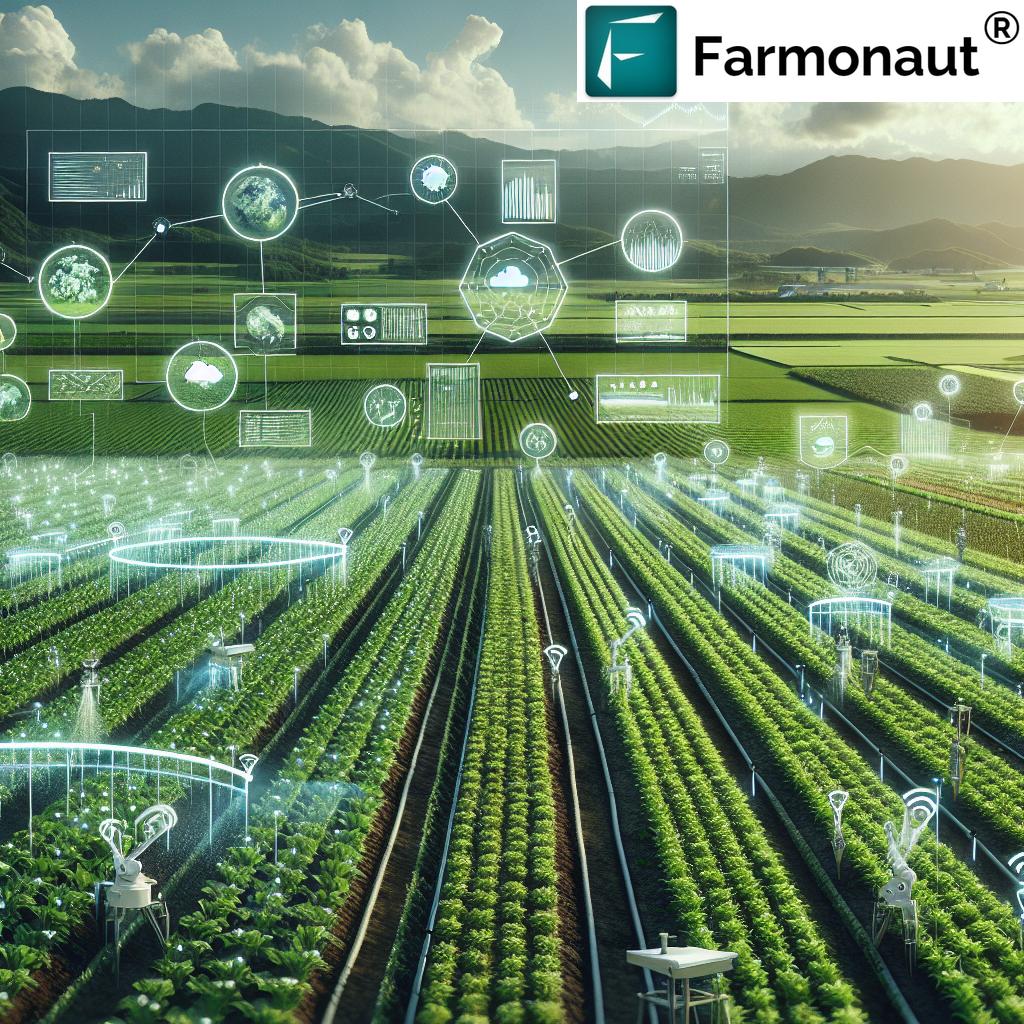
Try the Farmonaut smart farm management web app or Android / iOS apps for powerful satellite-driven analytics, real-time crop health monitoring, and AI-based advisory—all accessible from your smartphone or desktop!
What is Smart Farming?
Smart farming is a more integrated, holistic approach that leverages not just spatial data, but also real-time information and automation from across the entire farm ecosystem. Here, we connect the dots between precision agriculture, IoT in agriculture, artificial intelligence, robotics, cloud-based analytics, and big data, bringing together all aspects of modern agricultural management into a seamless digital system.
Smart farming doesn’t stop at crops or fields. It applies data-driven insights and automation to livestock, supply chain logistics, farm machinery, resource management, and even product traceability. The objective is to create a connected, autonomous, and highly adaptive farming system capable of predicting, learning, and optimizing everything from seeding to harvest—at any scale, from smallholder plots to massive agribusiness operations.
Core Components of Smart Farming Technologies
- Comprehensive Data Integration:
- IoT devices, drones, sensors, and satellite feeds stream live data into unified advanced farm management systems, offering a panoramic and granular view of all on-farm operations and environmental conditions.
- Real-Time Monitoring & Automation:
- Sensors continuously monitor soil, crop health, livestock, weather, and machine status. Automation solutions (e.g., IoT-controlled irrigation, autonomous tractors, or drone-based pest mitigation) respond instantly to changing on-ground or environmental conditions.
- Advanced Decision-Making:
- Artificial intelligence in agriculture, machine learning, and big data analytics deliver predictive models, risk assessment, prescriptive advice, and even autonomous on-farm decision execution—unlocking new heights of efficiency and operational sustainability.
Advanced Technologies Enabling Smart Farming
-
IoT in Agriculture:
- Networked smart devices and sensors collecting data on soil, moisture, environment, livestock, and more, enabling live monitoring and targeted, automated response.
-
Remote Sensing in Farming:
- Satellite and drone imagery drive multi-layered analysis of health, stress, disease outbreaks, and variable rate input application in real-time.
-
Artificial Intelligence & Machine Learning:
- Sophisticated software algorithms predict crop performance, optimize input allocation, automate alerting for pest and weed presence, or varying irrigation based on weather analytics.
-
Robotics & Automation:
- From seeding to harvesting, robotic machinery automates farm operations with unprecedented precision, freeing up labor and reducing operational costs.
-
Cloud-Based Analytics and Data Sharing:
- All farm management data is stored, processed, and visualized in secure cloud platforms, enabling on-the-go mission control via mobile or web apps.
Smart Farming: Real-World Impact on Agriculture
With far-reaching integration, smart farming delivers:
- Automated irrigation adjustment based on live soil moisture and weather data
- Livestock tracking for health, movement, breeding, and nutrition optimization
- Supply chain transparency via blockchain-based product traceability, helping secure food safety and consumer trust
- Fleet and resource management for tracking agricultural machinery and optimizing logistics (Perfect for agribusinesses seeking lower costs and higher efficiency)
- Carbon footprint tracking to monitor and reduce environmental impact (Explore Farmonaut’s solution for sustainability compliance)
Comparative Analysis: Precision Agriculture vs Smart Farming
Both precision agriculture and smart farming technologies are transforming agriculture, but their scope, integration, and capability differ substantially. Here’s how we can think about the most important differences—and why understanding them is crucial for any farmer, agribusiness, or policymaker.
-
Scope:
- Precision agriculture is focused at the field and crop level—analyzing and optimizing resource allocation based on data for specific areas or sections.
- Smart farming encompasses entire farm operations—from field crops to livestock, machinery, logistics, and supply chain.
-
Integration:
- Precision ag practices might only use GPS or remote sensing for variable rate fertilization.
- Smart farming integrates IoT, real-time analytics, AI, and automation into a seamless digital ecosystem for every component of agricultural production and farm management.
-
Decision-Making:
- Precision ag typically supports informed, site-specific manual decisions—often based on a technician or agronomist interpreting analytics.
- Smart farming enables real-time, often AI-driven autonomous decision-making, reducing the need for manual intervention and significantly boosting efficiency.
Feature Comparison Table: Precision Agriculture vs Smart Farming
| Feature / Aspect | Precision Agriculture | Smart Farming | Estimated Impact / Value |
|---|---|---|---|
| Data Sources | Satellite imagery, GPS, GIS, manual sampling | Satellite, drones, IoT sensors, farm machinery, weather, blockchain logs | Improves data richness and farm-wide awareness |
| Decision-Making | Primarily manual, data-guided | Automated, AI and machine learning-driven, real-time | Faster, more precise, proactive farm management |
| Cost Efficiency | Up to 30% savings in input use | Up to 40% operational savings via automation and predictive analytics | 10–15% additional savings over precision-only systems |
| Yield Improvement | Up to 20% increase due to targeted interventions | 20–25% increase; higher yield predictability (over 20%) | Enhanced consistency, risk reduction |
| Sustainability Impact | Reduced fertilizer and water use, less runoff | Integrated carbon footprint tracking, holistic resource optimization | Supports environmental compliance and sustainable farming practices |
| Scalability | Best for field/crop scale (1–1000ha) | Scalable to whole farms, agribusinesses, and supply chains (10–100,000+ ha) | Suited for everyone—from smallholders to multinationals |
Farmonaut: Empowering Modern Agriculture Globally
Leaders in agricultural technology like Farmonaut are accelerating the adoption of both precision agriculture and smart farming technologies through affordable, scalable, and cloud-based platforms. Our solutions harness multispectral satellite imagery, AI-based advisory, and blockchain traceability—all accessible from mobile or web apps—bringing advanced decision-making tools to fields of every size and geography.
-
Satellite-Based Crop Health Monitoring:
- Monitor vegetation health (NDVI), soil moisture, and more using multispectral remote sensing data. Identify crop stress, pest outbreaks, and irrigation needs early—optimize your inputs and maximize yield.
-
AI-Based Jeevn Advisory:
- Get real-time, personalized recommendations for irrigation, fertilizer, weather risk, and crop scheduling. Our AI analyzes satellite and local data to deliver practical, actionable guidance.
-
Blockchain-Based Product Traceability:
- Ensure secure and transparent supply chains with end-to-end traceability. Build consumer trust and defend your brand with tamper-proof, verifiable data from the field to the final product.
-
Fleet & Resource Management:
- Optimize field operations and logistics. Our resource management tools reduce vehicle downtime, track usage, and cut overhead costs.
-
Carbon Footprinting & Sustainability:
- Track, analyze, and manage your farm’s carbon emissions in real-time with Farmonaut’s carbon footprinting tool. Meet sustainability goals, unlock green certification, and comply with new regulations.
-
Crop Loan & Insurance Verification:
- Use satellite-based verification for loan and insurance processes, reducing fraud, accelerating access to finance, and lowering risks for farmers and lenders alike.
-
Large-Scale & Forest Plantation Advisory:
- Unlock large-scale crop, forest, or plantation management with satellite-driven analytics for improved yield and environmental stewardship.
For software developers, agribusinesses, and researchers, integrate our real-time satellite and farm data directly into your own systems with the Farmonaut API. Build your agritech solutions faster and smarter with our powerful developer documentation.
Key Benefits & Challenges of Data-Driven Farming
Smart farming and precision agriculture both deliver tangible, measurable benefits—but also present challenges to adoption, especially for farmers new to modern digital agriculture.
Top Benefits
- Increased Efficiency: Automated decisions and variable rate input allocation reduce unnecessary wastage and cost.
- Boosted Productivity: Use of targeted crop health, soil, and micro-climate data leads to higher yields and improved produce quality—from wheat to tomatoes to tobacco and cotton.
- Enhanced Sustainability: Reduced fertilizer/pesticide/water use means lower runoff and greenhouse gas emissions, helping meet sustainability goals.
- Lowered Labor Requirements: Sensors, AI, and IoT devices handle repetitive tasks, long monitoring hours, and field scouting—freeing your time and reducing costs.
- Better Risk Management: Advanced analytics help predict and prevent losses from droughts, pests, and even market shocks.
- Secured Supply Chains: Blockchain-based traceability protects against counterfeiting, fraud, and food safety risks.
Common Challenges
- High Initial Investment: Hardware, software, and setup require significant upfront capital, especially for farm automation solutions.
- Technical Expertise Required: Operating advanced farm management systems, drones, and analytics tools sometimes needs new skills or specialist training.
- Data Management Complexity: Fields can generate terabytes of data—which means robust storage, analysis tools, and reliable internet connectivity are critical, especially in remote areas.
- System Integration & Compatibility: Hardware and software interoperability still challenge many farms—open standards and multiplatform solutions like Farmonaut’s API can help bridge the gap.
- Internet Connectivity Limitations: Many rural or remote farms lack reliable broadband—a hurdle for real-time monitoring and cloud-based analytics.
Get Started with Farmonaut Apps and APIs
Experience real-time satellite imagery, large-scale farm management, AI crop advice, and more on your farm—wherever you are!
APIs for Developers & Agribusiness: Farmonaut API provides seamless access to satellite & weather data. Build next-generation agritech solutions with our developer documentation.
Farmonaut Subscription Plans
Farmonaut makes precision agriculture and smart farming accessible and affordable worldwide through its flexible subscription packages. Monitor any farm, anywhere with our Android, iOS, and Web Apps—scale seamlessly as your operation grows.
Frequently Asked Questions (FAQ)
What is the core difference between precision agriculture and smart farming?
Precision agriculture focuses on optimizing field-level resource allocation using site-specific data, whereas smart farming integrates IoT, AI, automation, and real-time analytics across all farm operations—including crops, livestock, supply chain, and resource management—enabling autonomous, holistic farm management.
How can precision agriculture and smart farming increase farm profitability?
Both methods help in reducing input costs, boosting yields, improving sustainability, and lowering environmental impact via targeted interventions. Smart farming’s real-time analytics and automation take these gains further by allowing earlier interventions and proactive decision-making across more farm operations.
What technologies are essential for adopting smart farming?
Key technologies include IoT sensors and devices, robotics, AI and machine learning, drone and satellite remote sensing, variable rate applicators, and advanced cloud-based analytics platforms like Farmonaut’s farm management system.
I’m a smallholder farmer. Is smart farming or precision agriculture affordable and scalable for me?
Yes! Solutions like Farmonaut democratize access by offering affordable subscriptions that don’t require expensive hardware. As your farm grows, you can scale up to more advanced features and integrate further automation as needed.
How does Farmonaut promote sustainability?
Farmonaut assists with carbon footprint tracking, reducing input waste, fleet optimization, and resource management—helping both independent farmers and large agribusinesses achieve their sustainable farming practices and meet regulatory requirements.
Is technical expertise required to use these modern farming solutions?
While some initial guidance may help, platforms like Farmonaut offer intuitive dashboards, AI advisory, and in-app support, allowing farmers of all backgrounds to benefit from smart technology with minimal training.
What should I do if internet connectivity is limited in my area?
Satellite-based solutions can function with intermittent connectivity for data download when available; however, for full real-time integration and automation, a stable internet connection is ideal. Offline features and local data caching, as offered by some Farmonaut app modules, can partially bridge this gap.
Where can I read more about Farmonaut’s traceability solutions?
Visit our traceability page to learn how blockchain and data-driven monitoring assure transparent supply chains.
Conclusion
The future of agriculture is data-driven, smart, and sustainable. As both precision agriculture and smart farming technologies revolutionize how we analyze fields, monitor crop health, allocate resources, and make decisions, understanding their key differences empowers us to choose the right strategies for every field, farm, and agribusiness.
Precision agriculture remains the foundation—leveraging satellite, drone, and sensor data for variable rate input application. Smart farming takes the next leap—fusing diverse technologies (IoT, AI, blockchain, robotics) into an integrated, autonomous, and holistic management solution for crops, livestock, logistics, and beyond.
With scalable, accessible solutions from platforms like Farmonaut, farmers across the globe—from smallholder plots in India, Nigeria, or Brazil, to giant agribusinesses in the US, Europe, and Asia—can unlock the benefits of both models: higher yields, reduced costs, improved sustainability, and greater resilience in the face of rapid environmental and market change.


